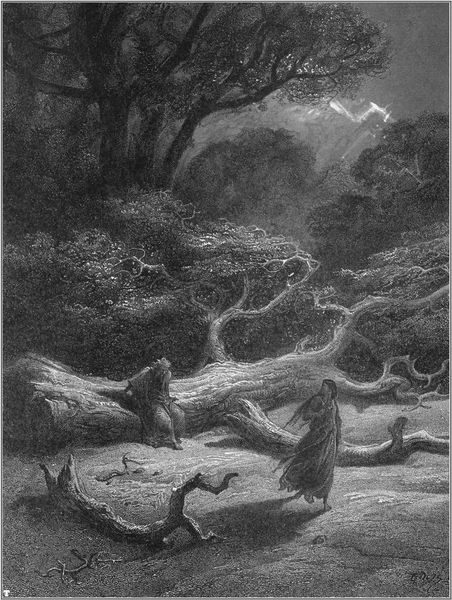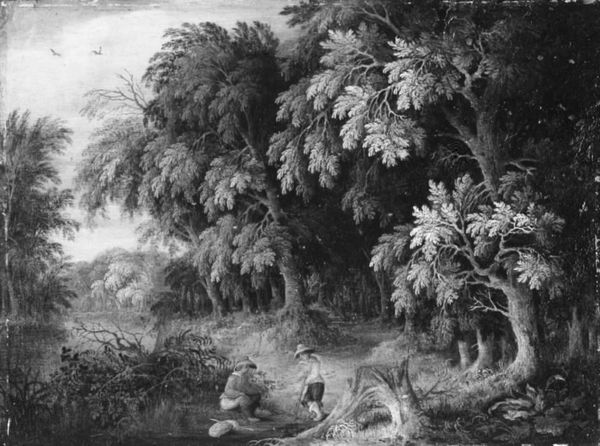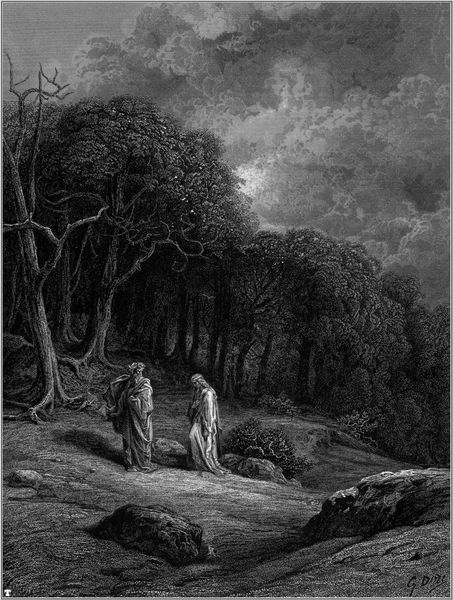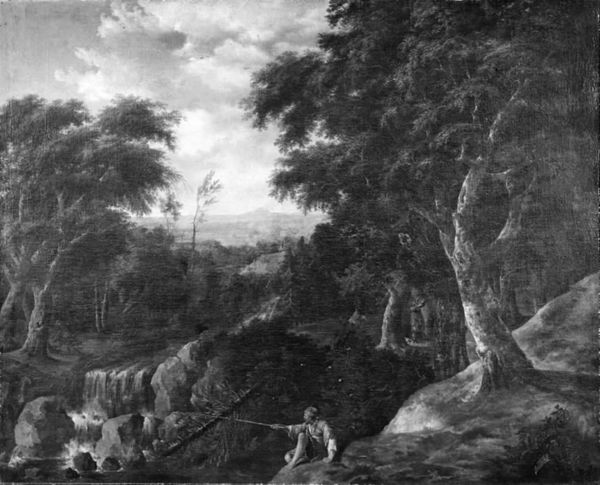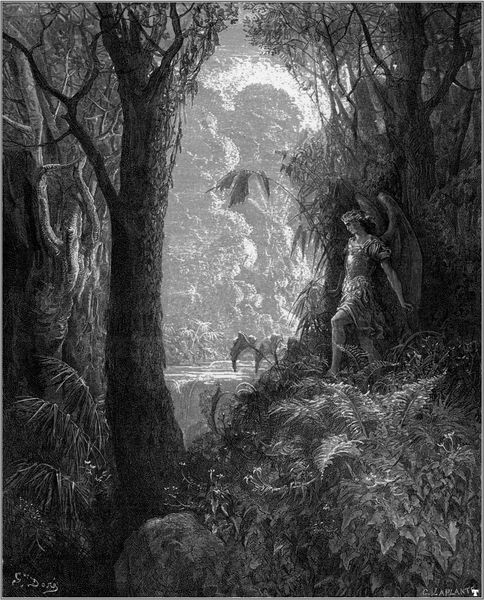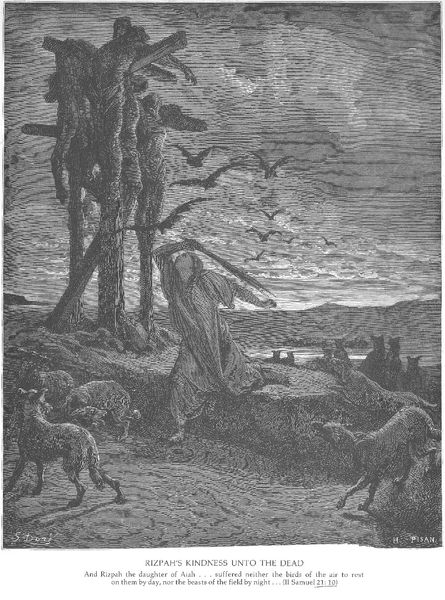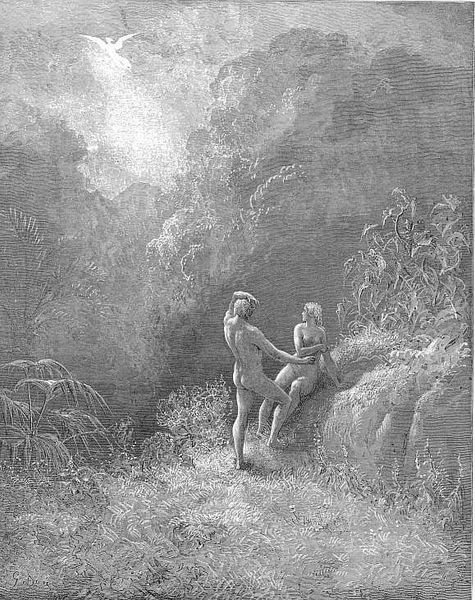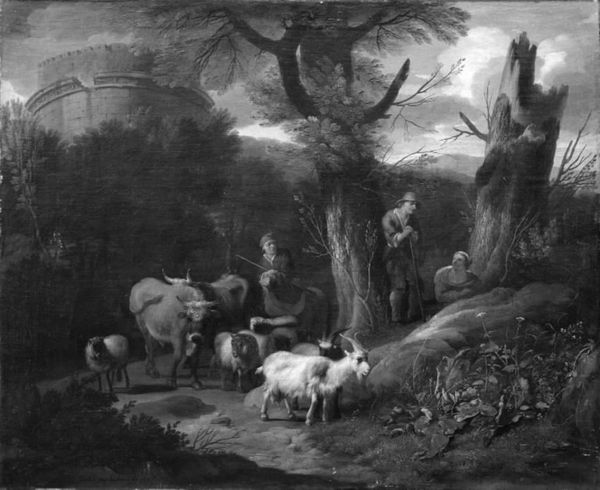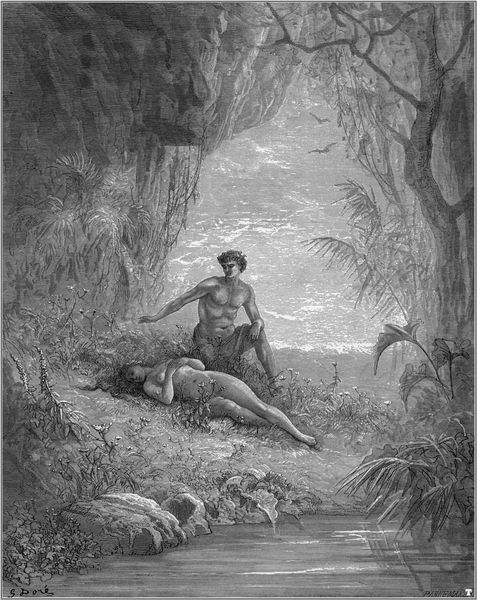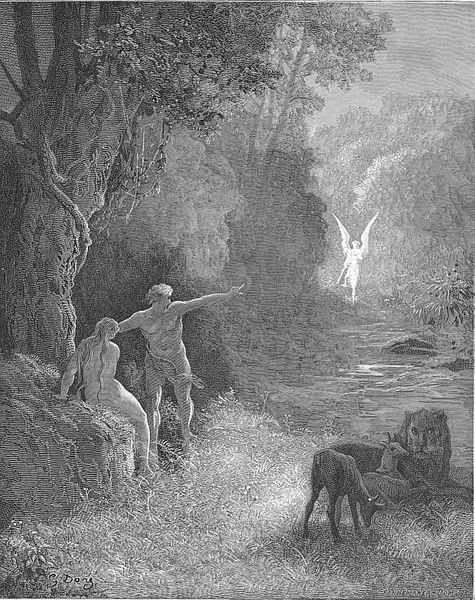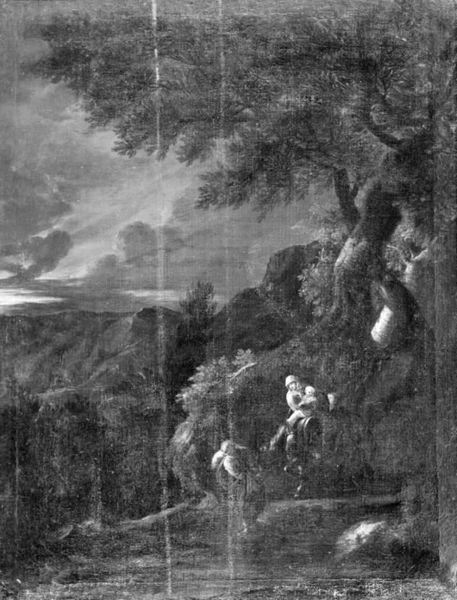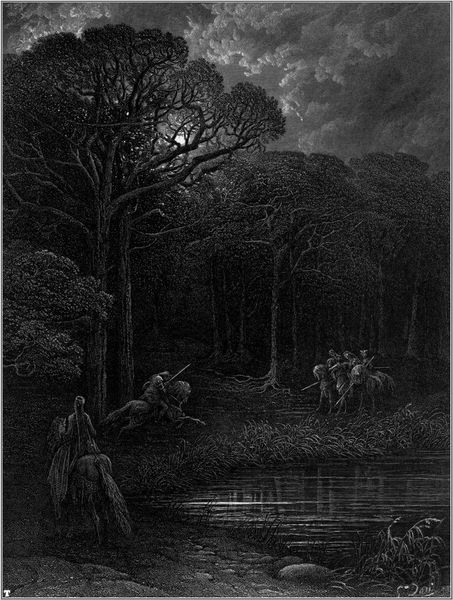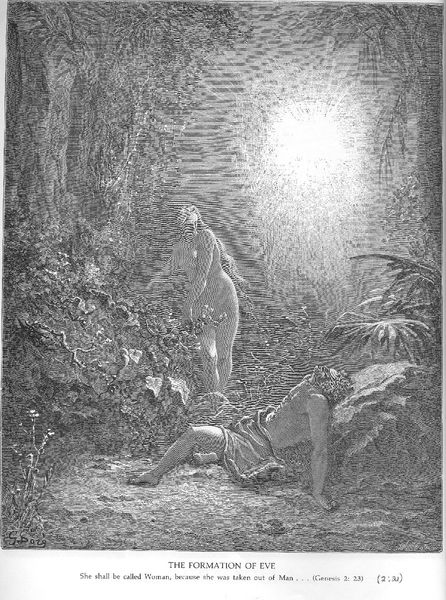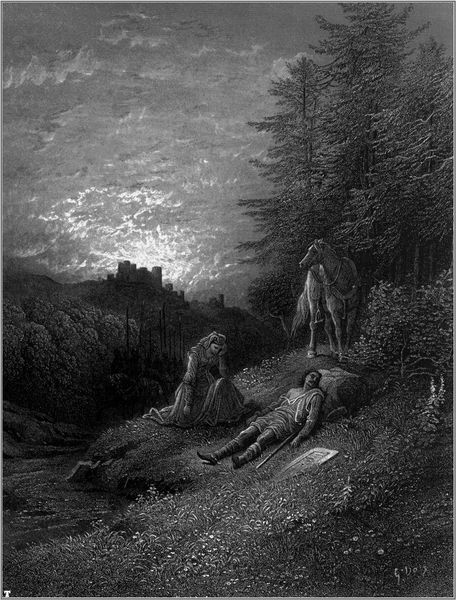
drawing
#
drawing
#
narrative-art
#
animal
#
landscape
#
figuration
#
nature
#
forest
#
romanticism
#
water
#
monochrome
Copyright: Public domain
Editor: This is Gustave Doré's "And now on earth the seventh Evening arose in Eden", a drawing, although the exact date isn't available. It evokes a really peaceful atmosphere. All these animals, coexisting... How do you interpret this work, especially given Doré's well known illustrative style? Curator: Well, first look at the material itself - a drawing. Consider what that signifies in the mid-19th century, a time when reproductive technologies were rapidly evolving. Drawings became a key way that visual information was circulated, often via wood engraving, and helped shape a collective imagination. How does this drawing function as a mass-produced object? Who was the intended audience and what kind of access did the public have to fine art in contrast to popular imagery? Editor: So you're suggesting that we consider the societal impact of circulating this image widely. What about the content? All the animals and biblical references... Curator: Precisely. Think about the production of Romanticism, especially the focus on nature, sublime terror, and the construction of fantasy. We see a detailed execution here – not the slick, academic finish of some paintings but the tangible presence of the artist’s hand working laboriously, shaping public feeling about Eden through detailed observation. Doré wants the viewer to remember that the pastoral ideal came from labor: it took labour to produce those scenes. What can this image, mass-produced in publications, tell us about consumption, labor and morality in the era when this was made? Editor: So, the technique and materials of this work aren't secondary to its subject; they're vital in understanding how Doré and the publishers shaped its reception, even the creation of a shared idyllic image of paradise. Curator: Exactly. Considering the drawing as a crafted object, disseminated through specific channels of production and consumption, allows us to see this 'Eden' not as some innate, universal ideal, but rather as the manufactured product of a particular cultural moment. Editor: I never thought about approaching Doré through production like this. I see now, it highlights so much about that time. Thank you!
Comments
No comments
Be the first to comment and join the conversation on the ultimate creative platform.
